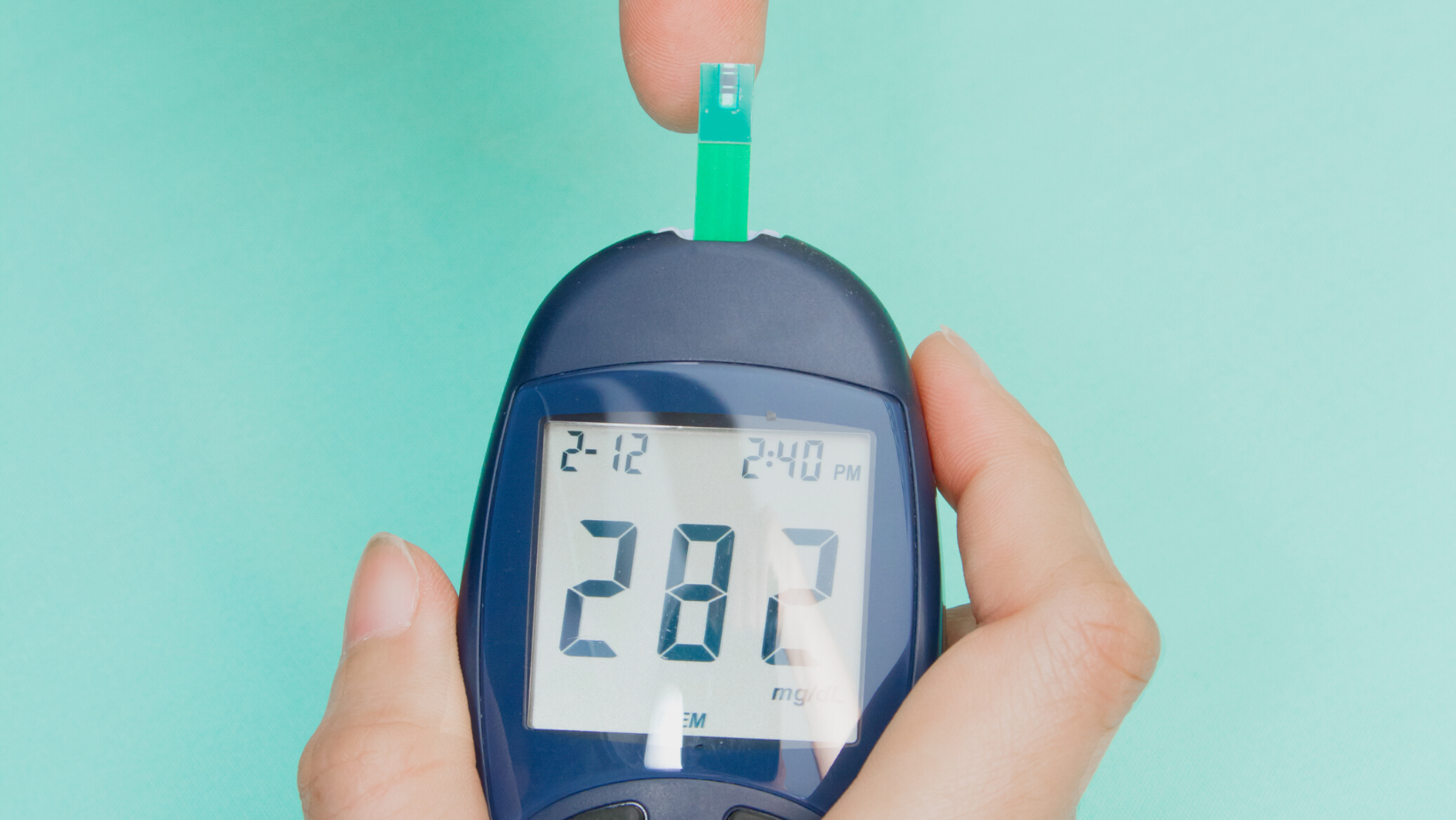greenmcmeds health risk assessment
This assessment is a powerful analysis tool for managing patients’ health. Scientifically validated and FDA-cleared, this non-invasive medical device takes less than 5 minutes to complete. It provides a comprehensive overview of a patient’s health at-a-glance.

Why should I get this assessment?
Our Health Risk Assessment offers your doctor a fast and non-invasive way to effectively measure the state of your health in these and many other areas:
- Diabetes
- Obesity
- Peripheral, Circulatory, and Diabetic Neuropathies
- Pain Management,
- Heart disease, Hypotension, and Tachycardia
With this vital information immediately in hand, your doctor can quickly formulate a treatment plan.
Is it expensive?
Not at all! Medicare covers the service and most other insurance plans. (Standard co-pays and deductibles may apply)
Is it safe?
Yes! This test is completely non-invasive and can be repeated multiple times without any side effects.
Is it painful?
Not at all! This test is completely painless, non-invasive, and can be performed as many times as needed.
WHEN DO I GET RESULTS?
The test results are available for immediate review by your doctor so that they can discuss the results with you.
What an ABI Test actually looks for:
This test is done by measuring blood pressure (BP) at the ankle and in the arm while a person is at rest using the ABI machine designed for this type of measurement. Some people also do an exercise test. In this case, the BP measurements are repeated at both sites after a few minutes of walking on a treadmill. The ABI result is used to predict the severity of peripheral artery disease (PAD). A slight drop in your ABI with exercise means that you probably have PAD. This drop may be important because PAD can be linked to a higher risk of heart attack or stroke.
Normal Results
A normal resting ABI is 1.0 to 1.4. This means that your BP at your ankle is the same or greater than the pressure at your arm, and suggests that you do not have significant narrowing or blockage of blood flow.
Abnormal Results
Abnormal values for the resting ABI are 0.9 or lower and 1.40 or higher. If the ABI is 0.91 to 1.00, it is considered borderline abnormal. Abnormal values might mean you have a higher chance of having narrowed arteries in other parts of your body. This can increase your risk of a heart attack or stroke.
FOR Physicians
The GreenMCMeds (GMCM) Health Risk Assessment is a powerful analytical tool for managing your patient’s health. Scientifically validated and FDA-cleared, this medical device conducts a range of tests incorporating the use of oximetry, galvanic skin responses, and blood pressure intake. The Test is:
- Non-invasive
- User-friendly
- Less than 5 minutes
- Covered and reimbursed by most insurances (Medicare & PPOs)
The recording includes a baseline phase where the patient is relaxed and a testing phase where the patient is asked to perform breathing exercises during the exam. The software uploads the compiled data of the devices and displays 8 Risk Factors on the dashboard screen.
It is intended for use in clinical settings as an aid for healthcare professionals to review and evaluate the comprehensive Physician Report Summary.
The GMCM Health Risk Assessment performs the following tasks:
- In real-time, uploads readings of SpO2, pulse rate, and waveform from the pulse oximeter.
- Uploads readings of galvanic skin response from electrical stimulation via footplates or electrodes located on the feet.
- Data management and assessment of the Autonomic Nervous System (ANS), Sudomotor function, Endothelial function, Cardiovascular risk, heart rate variability, and body composition indicators with diet and lifestyle recommendations.
- Results are immediately displayed on the dashboard. PDF reports can be generated from the database for the physician to review.
OUR Specialties
If your practice is one of the following, the GMCM Health Risk Assessment may provide insurance reimbursements (subject to medical necessity). This list is NPI has driven (based on NPI registration):
List of Services
-
Family Medicine Write a description for this list item and include information that will interest site visitors. For example, you may want to describe a team member's experience, what makes a product special, or a unique service that you offer.
List Item 1 -
General Practice Write a description for this list item and include information that will interest site visitors. For example, you may want to describe a team member's experience, what makes a product special, or a unique service that you offer.
List Item 2 -
Primary Care Write a description for this list item and include information that will interest site visitors. For example, you may want to describe a team member's experience, what makes a product special, or a unique service that you offer.
List Item 3 -
Orthopedic Surgeon Providing Long Term Care Write a description for this list item and include information that will interest site visitors. For example, you may want to describe a team member's experience, what makes a product special, or a unique service that you offer.
List of Services
-
Cardiology Write a description for this list item and include information that will interest site visitors. For example, you may want to describe a team member's experience, what makes a product special, or a unique service that you offer.
List Item 1 -
Neurology Write a description for this list item and include information that will interest site visitors. For example, you may want to describe a team member's experience, what makes a product special, or a unique service that you offer.
List Item 2 -
Internal Medicine Write a description for this list item and include information that will interest site visitors. For example, you may want to describe a team member's experience, what makes a product special, or a unique service that you offer.
List Item 3 -
OB/GYN Write a description for this list item and include information that will interest site visitors. For example, you may want to describe a team member's experience, what makes a product special, or a unique service that you offer.
List of Services
-
Endocrinology Write a description for this list item and include information that will interest site visitors. For example, you may want to describe a team member's experience, what makes a product special, or a unique service that you offer.
List Item 1 -
D.O. (Doctor of Osteopathy) Write a description for this list item and include information that will interest site visitors. For example, you may want to describe a team member's experience, what makes a product special, or a unique service that you offer.
List Item 2 -
Pain Management (Integrated Practice) Write a description for this list item and include information that will interest site visitors. For example, you may want to describe a team member's experience, what makes a product special, or a unique service that you offer.
List Item 3 -
Multi-Specialty Groups Write a description for this list item and include information that will interest site visitors. For example, you may want to describe a team member's experience, what makes a product special, or a unique service that you offer.
GreenMCMeds Health Risk AssessmentS USE
Cardiovascular and ANS Medical Devices
This medical device is a powerful analytical tool for managing your patient’s health. Scientifically validated and FDA-cleared, this medical device performs a range of tests covered and reimbursed by most insurance companies. This system is fast, non-invasive, and takes less than five minutes to complete an assessment. The one-page Physician Dashboard provides a comprehensive overview of a patient’s health at a glance. The analytical system provides patient insights covering eight risk factors that are described in the pages that follow. Depending on the risk score for each factor, you will be able to determine the best course of action to resolve the patient’s condition as well as motivate your patient to take immediate action.
TOP 8 Risk Factors
1. AUTONOMIC NERVOUS SYSTEM DYSFUNCTION RISK – ANSD
Problems with the ANS can range from mild to life-threatening. Sometimes only one part of the nervous system is affected. In other cases, the entire ANS is affected. Some conditions are temporary and can be reversed, while others are chronic and will continue to worsen over time. Diseases such as Diabetes or Parkinson’s disease can cause irregularities with the ANS. Problems with ANS regulation often involve organ failure, or the failure of the nerves to transmit a necessary signal.
2. SUDOMOTOR DYSFUNCTION RISK – SudoD
Sudomotor dysfunction testing may indicate to physicians a patient’s peripheral nerve and cardiac sympathetic dysfunction. Neuropathy is a common complication in diabetes mellitus (DM), with 60%-70% of patients affected over their lifetime. Symptoms of neuropathy are very common, and sub-clinical neuropathy is more common than clinical neuropathy. Neuropathy may remain undetected, and progress over time leading to serious complications. The most common associated clinical condition is peripheral neuropathy, affecting the feet. Autonomic nerve involvement is common but probably the most undiagnosed. Low scores in the sudomotor may lead a medical provider to look at clinical
neuropathy.
3. ENDOTHELIAL DYSFUNCTION RISK – EndoD
Current evidence suggests that endothelial function is an integrative marker of the net effects of damage from traditional and emerging risk factors on the arterial wall and its intrinsic capacity for repair. Endothelial dysfunction, detected as the presence of reduced vasodilation response to endothelial stimuli, has been observed to be associated with major cardiovascular risks factors, such as aging, hyperhomocysteinemia, post-menopause state, smoking, diabetes, hypercholesterolemia, and hypertension.
4. INSULIN RESISTANCE RISK – IR
Insulin resistance is defined clinically as the inability of a known quantity of exogenous or endogenous insulin to increase glucose uptake and utilization in an individual as much as it does in a normal population. Insulin resistance occurs as part of a cluster of cardiovascular metabolic abnormalities commonly referred to as “The Insulin Resistance Syndrome” or “The Metabolic Syndrome”. This cluster of abnormalities may lead to the development of type 2 diabetes, accelerated atherosclerosis, hypertension, or polycystic ovarian syndrome depending on the genetic background of the individual developing the insulin resistance.
5. CARDIOMETABOLIC RISK – CMR
The specific factors that can cause this increased risk include obesity (particularly central), hyperglycemia, hypertension, insulin resistance, and dyslipoproteinemia. When patients have one or more risk factors and are physically inactive or smoke, the cardiometabolic risk is increased even more. Medical conditions that often share the above characteristics, such as type 2 diabetes, can also increase cardiometabolic risk. The primary focus of cardiometabolic risk treatment is the management of each high-risk factor, including dyslipoproteinemia, hypertension, and diabetes. The management of these subjects is based principally on lifestyle measures, but various antihypertensive, lipid-lowering, insulin-sensitizing, anti-obesity and antiplatelet drugs could be helpful in reducing cardiometabolic risk.
6. SMALL FIBER NEUROPATHY RISK – SFN
Small fiber neuropathy occurs when damage to the peripheral nerves predominantly or entirely affects the small myelinated fibers or unmyelinated C fibers. The specific fiber types involved in this process include both small somatic and autonomic fibers. The sensory functions of these fibers include thermal perception and nociception. These fibers are involved in many autonomic and enteric functions.
7. CARDIAC AUTONOMIC NEUROPATHY RISK – CAN
High blood glucose levels over a period of years may cause a condition called autonomic neuropathy. This is damage to the nerves that control the regulation of involuntary function. When nerve damage affects the heart, it is called cardiac autonomic neuropathy (CAN). CAN encompasses damage to the autonomic nerve fibers that innervate the heart and blood vessels, resulting in abnormalities in heart rate control, vascular dynamics, and the body’s ability to adjust blood pressure. CAN is a significant cause of morbidity and mortality associated with a high risk of cardiac arrhythmias and sudden death.
8. PLETHYSMOGRAPHY CARDIOVASCULAR DISEASE RISK – PTG CVD
The PTG CVD risk factor is the combined total of the other seven risk factors assessments. It takes into consideration the cardiovascular as well as the autonomic nervous system (ANS) measurements.
How to Use OUR Health Risk Assessment
The ordering physician (MD, DO, NP, PA, or APN) must establish medical need for testing. This includes completion of a thorough history and physical examination consistent with the nature and complexity of the patient’s presenting complaint. This full patient assessment must be made prior to testing. ANS function testing is covered as reasonable and necessary when used to evaluate symptoms indicative of vasomotor instability – such as hypotension, orthostatic tachycardia, and hyperhidrosis – after more common causes have been excluded by other means of testing. The ANS testing is directed at establishing a more accurate or definitive diagnosis or contributing to clinically useful and relevant medical decision-making.
Factors to Determine Medical Necessity:
- To diagnose the presence of autonomic neuropathy in a patient with signs or symptoms suggesting a progressive autonomic neuropathy
- To evaluate the severity and distribution of a diagnosed progressive autonomic neuropathy
- To differentiate the diagnosis between certain complicated variants of syncope from other causes of loss of consciousness
- To evaluate inadequate response to beta-blockade in vasodepressor syncope
- To evaluate distressing symptoms in a patient with a clinical picture suspicious of distal SFN in order to diagnose the condition
- To differentiate the cause of postural tachycardia syndrome
- To evaluate change in type, distribution or severity of autonomic deficits in patients with autonomic failure
- To evaluate the response to treatment in patients with autonomic failure who demonstrate a change in clinical exam
- To diagnose axonal neuropathy or suspected autonomic neuropathy in asymptomatic patient
- To evaluate and treat patients with recurrent unexplained syncope to demonstrate autonomic failure after more common causes have been excluded by another standard testing
Reasons the Test Should NOT be Used:
- To screen patients without signs or symptoms of ANS dysfunction, including patients with diabetes
- To test for the sole purpose of monitoring disease intensity or treatment efficacy in diabetes, hepatic or renal disease
- To test where the results are not used in clinical decision-making and patient management
- Tests should not be performed by physicians who do not have evidence of training and expertise to perform and interpret these tests.
A NOTE FOR Providers
All “indications” must be clearly documented in the patient’s medical record and made available to Medicare upon request. This documentation is critical and will reduce the risk of Recovery Audit Contractor (RAC) audits and recovery. Documentation must support Centers for Medicare and Medicaid Services (CMS) “signature requirements”. Physicians can bill an Evaluation and Management (E/M) code (office visit) along with these services. Also, physicians can bill one test more than once if they can document the need (i.e. borderline findings or inconsistency in critical values).
FREQUENTLY ASKED QUESTIONS
Quick Facts for GMCM Health Risk Assessment
Health Risk Assessment Sample Report

Our Inspiration
Mon Chéri remains a profound source of inspiration for us. Her courageous battle with brain cancer compelled us to reassess our approach to illness and disease, prescription drugs, and the critical significance of knowledge in both preventing and treating them. Additionally, her journey ignited our passion for plant science and its potential to heal not only individuals but also the world at large, driving us to explore innovative ways to harness the power of nature for holistic health and environmental sustainability.
Collaboration with CC Insurance
*GreenMCMeds is not involved in the cultivation or dispensing of cannabis, and we have no affiliations with dispensaries or cultivation sites.
© 2025 All Rights Reserved | GreenMCMeds










